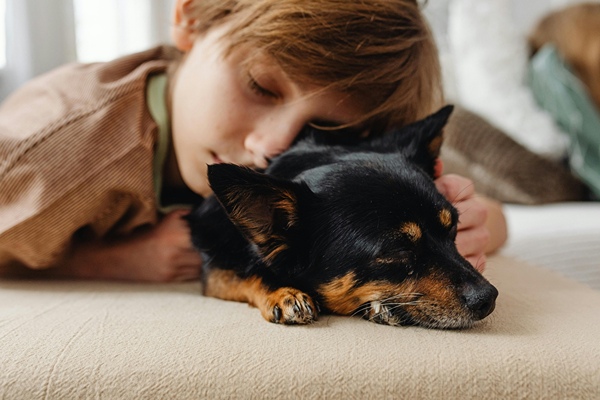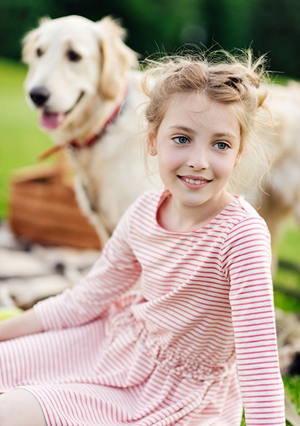How to Use Pet Responsibilities to Encourage Kids to Be More Responsible
Introducing pet care responsibilities to children is a valuable way to teach them about responsibility in a meaningful, hands-on manner. Through these tasks, kids learn essential skills such as accountability, empathy, and time management. Caring for a pet strengthens the bond between the child and the animal while providing a foundation for lifelong learning.
This article provides practical advice on nurturing responsibility in children through pet care, covering age-appropriate tasks, consistency, accountability, and challenges.
Choosing Age-Appropriate Pet Care Tasks
The American Kennel Club states assigning age-appropriate pet care tasks boosts kids’ self-esteem. For instance, a 3-year-old may place the water bowl while older children handle walking the dog. Tailoring tasks to a child’s age ensures they feel capable and valued, fostering confidence and a sense of responsibility in pet care.
Starting with simple tasks like filling food and water bowls helps younger children learn basic routines and the importance of consistency. As they grow, introducing tasks like grooming or cleaning up after the pet teaches them broader aspects of responsibility, such as hygiene and health.
Older kids can handle tasks like feeding the pet according to dietary needs or administering medication under supervision. These responsibilities boost problem-solving skills and provide a sense of accomplishment as they see the positive impact of their care.
Parents can gradually increase the complexity of tasks as children mature. This approach helps kids develop a deeper sense of empathy and responsibility, both of which are essential life skills.
How can I determine which tasks are appropriate for my child’s age and maturity level?
To determine appropriate pet-care tasks for your child’s age and maturity level, assess their strength, understanding, and responsibility. Younger children should start by assisting or observing pet care, learning gradually. Older children can handle more complex tasks independently, such as feeding, walking, and cleaning. Tailor responsibilities to match their developmental stage and capability.
Creating a Pet Care Schedule
A well-structured pet care schedule helps children manage their responsibilities effectively. Assigning specific tasks at set times each day teaches kids the importance of routine and time management.
A visual schedule, like a chart or calendar, can be particularly helpful for younger children. Regularly reviewing and adjusting the schedule ensures that it remains practical and manageable as the child’s abilities and the pet’s needs evolve.
Encouraging Consistency and Accountability
Consistency is key in teaching children to be responsible. Encouraging daily completion of pet care tasks, without constant reminders, helps build accountability. Parents can support this process by setting clear expectations and offering gentle prompts as needed. Using reward charts or verbal praise to monitor progress reinforces consistent behavior, making pet care a reliable daily routine for children.
Portage Park Animal Hospital & Dental Clinic states growing up with pets fosters responsibility and empathy in children. By participating in feeding, grooming, and vet checkups, kids learn about pet care. They understand the significance of vaccinations, spay/neuter, microchips, dental health, proper diet, and training. This experience not only teaches them about pet care but also instills values of accountability and respect for others.
How can I help my child stay accountable if they forget or skip their pet care responsibilities?
Use gentle reminders, such as visual cues or checklists, to help your child remember their responsibilities. Consistently review their progress and discuss the importance of accountability. Encourage them by linking consequences or rewards to their pet care duties, fostering a sense of responsibility without applying excessive pressure.

Balancing Pet Care with Other Chores
Balancing pet care with other household chores teaches children how to prioritize and manage their time effectively. By integrating pet care into a broader chore schedule, kids learn to juggle multiple responsibilities.
Clear expectations and guidance from parents help children understand how to divide their time between tasks. This balance ensures that pet care is seen as an important but manageable responsibility.
Handling Specialized Tasks
Some pet care tasks require specialized attention or skills, like administering medication or grooming. It’s crucial to assess a child’s ability and provide the necessary training or supervision for these tasks.
Parents can demonstrate the tasks first and then involve the child as they become more confident. Handling specialized tasks helps children understand the diverse needs of their pets and the significance of providing proper care.
GlobalPETS states tasks like pet grooming are used by 60% of pet owners, with minimal variation by country or age group. In contrast, specialized services like dog or cat nutrition consultations are less common, with only 13% of pet owners utilizing them. Acupuncture and pet taxis are even less frequently used, highlighting a preference for more mainstream pet care options.
One such handy service is pet waste removal service. Outsourcing this task lets families focus on other pet care aspects and allows kids to handle age-appropriate responsibilities without the mess.
If you live in an apartment or a residential community, commercial dog waste removal services become even more crucial. These services ensure that shared spaces like dog parks and communal areas remain clean and safe for everyone. Although condo management takes responsibility, you should do your bit to maintain hygiene.
By involving your kids in this process, they learn the importance of maintaining cleanliness and respecting shared environments. It fosters a sense of responsibility and community awareness.
To further sanitize the area, it should be deodorized. According to Scoop Soldiers, a robust deodorizer is a powerful ally in neutralizing the unpleasant odors associated with pet waste and urine. This solution eliminates unwanted smells and deters pests and rodents, ensuring a cleaner, more hygienic environment around pet waste areas.
Providing Positive Reinforcement and Feedback
Positive reinforcement is vital in encouraging responsible behavior in children. Praising them for their efforts and successes in pet care builds their confidence and motivation. Offering rewards, whether verbal praise or small incentives, reinforces good habits.
Constructive feedback is also crucial, guiding children on how to improve while acknowledging their achievements. This creates a supportive environment for learning and growth.
Addressing Common Challenges and Solutions
Children may encounter challenges like forgetfulness, lack of interest, or difficulty completing tasks. Parents can help by offering gentle reminders, making tasks more engaging, or simplifying duties to better match the child’s abilities.
Open communication and setting realistic expectations about pet care help children overcome challenges and remain committed to their responsibilities.
What are some common challenges children face when taking on pet care tasks?
Common challenges include forgetfulness, waning interest, and difficulty with certain tasks. Children may also struggle with time management or balancing pet care with other responsibilities. To overcome pet care challenges, parents can offer support, simplify tasks, provide encouragement, and establish a consistent routine incorporating pet care.
Nurturing Empathy Through Pet Care
Incorporating pet care into a child’s routine is an effective strategy for teaching responsibility and empathy. By carefully selecting age-appropriate tasks, establishing structured schedules, and encouraging consistency, parents can guide their children toward becoming responsible pet caregivers. Addressing challenges with patience and providing positive reinforcement ensures a rewarding and educational experience.







